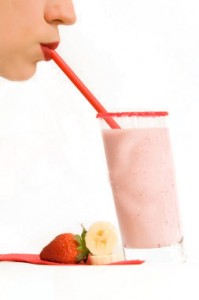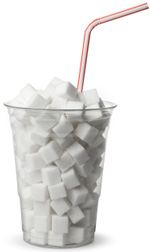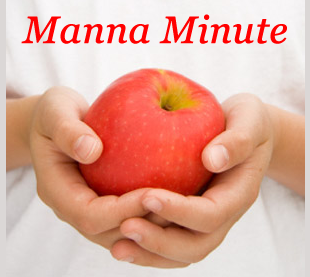
Bridge Over Troubled Beverage
 Happy National Nutrition Month! This month is about focusing attention on the importance of making informed food choices and developing sound eating and physical activity habits. As Manna Food Center’s Nutrition Educator, one of the ways I reach our many clients with healthy tidbits is in our Notes from the Nutritionist series. This monthly publication, in both English and Spanish, provides our clients simple, practical nutrition information. Clients can find my Notes from the Nutritionist right inside their closed Manna food box.
Happy National Nutrition Month! This month is about focusing attention on the importance of making informed food choices and developing sound eating and physical activity habits. As Manna Food Center’s Nutrition Educator, one of the ways I reach our many clients with healthy tidbits is in our Notes from the Nutritionist series. This monthly publication, in both English and Spanish, provides our clients simple, practical nutrition information. Clients can find my Notes from the Nutritionist right inside their closed Manna food box.
Here’s a sample of our latest installment on juice:
Most people know that soda is an unhealthy beverage, and that caffeine and sugar are especially poor choices for youth. For a sweet fix, some people switch to juices—orange, apple, cranberry, or even fresh, homemade juices. You might pop into one of those shiny new smoothie shops for what see ms like a healthy, feel-good snack.
ms like a healthy, feel-good snack.
But did you know fruit juice has as much sugar as soda? Your body cannot tell the difference!
Fruit is healthy because it has fiber, plus vitamins and minerals. Juice does not have fiber, so it does not count as a serving of fruit. Snack on whole fruit, and try it with peanut-butter, or unsweetened yogurt.
SUBSTITUTE. Unsweetened tea and coffee are tasty with breakfast or dessert. You can add milk to coffee for sweetness and calcium. Add frozen citrus fruit slices to your water or frozen strawberries. Try mint, cucumbers, and ginger, too!
DILUTE. If you’re going to drink juice, or serve it to children, choose 100% juice—fill half the glass with water first. Beware: even 100% juice in a bottle or sippie cup can promote cavities in kids.
In my grocery store tours, clients most often ask about what type of sweetener is “best”… and that’s when I change the topic. In the words of Don Draper, “If you don’t like what they’re saying, change the conversation.” Eating well and enjoying food is not about trying to find the best way to get your sweet fix, it’s about eating wholesome, nutritious foods that allow your body to do all the important work it needs to do to repair, build, digest, function. I encourage clients to find the real food that hits their sweet spot: berries, apples, bananas, peaches–foods that brighten an unflavored dish with sweetness and nourishment. A packet of sugar does not have much to contribute to a healthy body, while a fresh fruit is vegetable is simply packed with the good stuff (fiber, water, vitamins and minerals) your body craves.
Moral of the Story: All the good stuff in life is made of water, and that includes you 😉 Be good to yourself.


Very informative article.
Can you put honey or Agave Nectar in coffee instead of sugar?
Thanks
I get this question on EVERY grocery store tour! Honey and Agave Nectar are delicious forms of sugar, but they are just that—sugar. The body recognizes brown sugar, white sugar, corn syrup, turbinado sugar, honey, etc. as simply sugar. What I like about agave nectar, personally, is that the sweet flavor is so concentrated, I use much less than spoonfuls of granulated sugar. But that’s just me.
The take home message is: limit your overall sugar intake (accounting for often-forgotten sugars in salad dressing, cereal, flavored yogurt, dried fruits) and get your sweet fix with naturally sweet fruits and vegetables. White bread and white rice spike your blood sugar in the way that agave nectar or granulated sugar does… all the more reason to choose more whole grains and whole, fresh produce in your day!